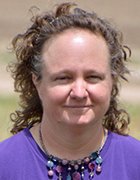
tiero - Fotolia
How to become a UX designer with your QA background
If you're a tester, a switch to a UX role is fairly simple. A range of UX design skills are just a matter of evaluating user needs before developers build the app code -- not after.
QA engineers and UX designers both provide feedback to developers to help ensure well-performing and intuitive products for end users. These two roles can learn a lot from each other. However, testers that want to learn how to become a UX designer will find that QA and UX initiatives often overlap.
UX designers evaluate software ideas with real users -- the acronym stands for user experience. UX specialists want to create the right software specification to hand to the developer to build, rather than confirm that a project adheres to the requirements, as testers do.
One common way to perform this assessment is with a usability lab, where target users interact with mock-ups and prototypes of the software while the UX designer observes. Another way to measure UX is with A/B split testing, in which the designer studies user engagement and response to different versions of a webpage or feature. Some companies obsess over A/B splits to inform even minor design decisions, so the ability to break out options is an important UX designer skill. User surveys are another popular, easy way to get customer feedback.
While software testers tend to make inferences from user data pulled from production logs, UX designers receive input directly from customers. But many testers already interact directly with their software's target market via user acceptance testing. To become a good UX designer, think about this same interaction -- whether the product is fit for use, or the specification is right -- before the software's creation, not after.
A software tester who wants to know how to become a UX designer will find that many QA skills translate in this way. UX designers dig deeper to understand how and why users react the way they do with software, but it's generally a smooth transition from one field to the other.
Translate QA to UX design skills
Testers' ability to ask questions, examine and expand use cases, as well as understand and anticipate the software's possible uses, overlap entirely with a desirable UX designer skillset.
To become a UX designer, showcase the quantitative skills, beyond simple data input into a spreadsheet, you developed as a tester. Modeling, and the ability to problem solve, help UX design.
For example, the alarm function in iOS' Clock app has a very large snooze button and a much smaller stop button. The app's designers might have made this choice because many people more often choose to snooze rather than stop the alarm. Likewise, when the alarm goes off and the user is awake, she will often swipe up to snooze the alarm, just to get rid of the message. A UX consultant might argue that, despite snooze being the most popular function, people still press it more frequently, simply because of its size.
Software testers must have an eagle eye for edge cases, and find resolutions for confusing situations. Sometimes, a great tester can serve as a stand-in for the product owner, and can decide what the software should do, in minute detail. While the product owner focuses on the high-level value of the software, the tester knows the code down to the details of error messages and how to address them.
Use your intuition
QA engineers sometimes use imperfect methods to identify problems. When testers find a misspelling on a webpage, they might use a dictionary. For a grammar problem, they might conjure a vague memory of an English teacher. Sometimes they simply appeal to common sense, and say, "this just feels wrong." A personal favorite tester refrain is, "I can't figure this user interface out." That means, simply, that the tester is too lazy to follow it. However, most users would be similarly impatient. Testers are a line of defense against confusing software and vague errors, which means they have inherent UX design skills.
As Steve Krug points out in "Don't Make Me Think: A Common Sense Approach to Web Usability," incredibly simple patterns work best. In the real world, if a door is designed to push open, make it without a handle, which removes the option to pull.
Ideally, UX designers create a workflow that doesn't require customers to wrack their brains. They're the bridge between customer wants and business requirements. UX designers must be able to create mock-ups and prototypes, run a test lab and sometimes produce even the raw graphic designs for the developers to create software.
In fact, if UX designers don't do a good job, and testers must address all the problems, the software gets programmed twice.
Don't call yourself a tester
Sometimes, a title change can do wonders for your career prospects. At TestBash New York 2015, Martin Hynie, engineering manager at Slack, told a story of changing the job titles of the members of his quality group from software testers to quality analysts. That simple change of job titles resulted in them getting invitations into design and planning meetings.
So, if you're a tester wondering how to become a UX designer, learn how to take control of a software project early on, to help developers create the experience and prevent all those tickets you wrote as a tester for bad workflows and message screens. In many respects, the differences between a UX specialist and a tester are often only a matter of emphasis.





